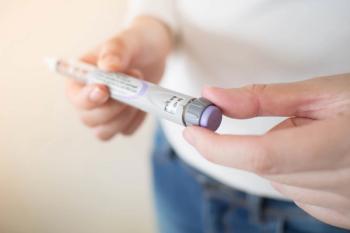While recent studies have compared continuous glucose monitoring (CGM) with self-monitoring of blood glucose (SMBG), CGM has separated itself as the ideal blood glucose monitoring system for diabetes patients.1 However, its benefits have yet to reach low-income areas due to CGM’s expensive monthly out-of-pocket costs for uninsured individuals with diabetes.
Key Takeaways
- Researchers addressed continuous glucose monitoring and its potential role in the pharmacies of indigent communities.
- CGM systems were confirmed as the leading resource for blood glucose monitoring.
- Researchers addressed the need for better access to CGM in specific communities.
“CGM costs range from $100 to $300 per month for individuals who do not have insurance coverage. Low economic status is associated with worse diabetes mellitus outcomes, and evaluating the use of CGM in this population can provide guidance on how to better assist these patients,” wrote Torres et al.2
Indeed, in a study focused on youth-onset T2D, “children and adolescents from very-low-income to middle-income families had a higher hazard of youth-onset type 2 diabetes and mortality than those from high-income families,” wrote the authors.3
Prior to this study, however, CGM effectiveness has not been documented in indigent populations particularly.2
CGM Effective in Indigent Population
Diabetes patients were included in the study if they had A1C levels of greater than 8%, hypoglycemia, glucose-related surgery delays, or severe diabetic complications.
Of the 50 patients (52% men; 86% Hispanic/Latino ethnicity) included in the analysis, A1C levels dropped from an average of 9.86% to 7.7% in the first 3 months. Furthermore, for the 18 individuals that completed the 6-month follow-up, the average A1C decreased even more to 7.26%.1
For participants experiencing hypoglycemia, the average A1C decreased from 8.38% to 6.65% from 3-6 months. And finally, there was 1 patient with T1D included in the study who experienced an A1C decrease from 13.2% to 8.5% after 6 months.1
READ MORE: Patients With Type 1 Diabetes Not Achieving Glycemic Targets Despite Use of New Technology
With average A1C decreases across the board, researchers confirmed previous studies’ recommendations to implement CGM as the most effective resource for monitoring blood glucose.
“CGM provides self-awareness, supports lifestyle modifications, and improves adherence,” wrote the authors.2
But with more advanced monitoring systems in place, financial hardships begin to take hold of indigent communities.
Take, for example, the finding in this study that 35% of participants needed to be provided with their own CGM readers, while the other 65% had readers compatible with their cellular devices.1
While over 15 participants were without a compatible device to monitor CGM alerts, it is likely that others in the indigent population are not able to financially access such resources like CGM systems.
However, with its increasing success in multiple populations, CGM systems are becoming the norm for glucose monitoring and researchers are working to get CGM implementation into the hands of pharmacists.
Future Studies Exploring CGM
In 2 ongoing studies presented in posters at the American Pharmacists Association Annual Meeting, researchers highlighted CGM systems and pharmacists’ access to the technology, specifically in a Hispanic population.
“The overall goal of this project innovation is to pilot a continuous glucose monitoring (CGM) service based in a community pharmacy at a federally qualified health center (FQHC) for patients living with diabetes. These patients with diabetes are predominantly Hispanic and medically underserved from lower socioeconomic communities in a metropolitan city on the United States-Mexico border,” wrote Salazar et al.4
With ongoing trials testing the efficacy of CGM systems in specific areas, researchers are now aiming to get these devices in the hands of as many people as possible, especially pharmacists.5
But access to these systems is most necessary in communities that are more susceptible to diabetes.
“Prioritizing accessibility could mean improved glucose control, and subsequently, reduced diabetes related complications within indigent populations,” concluded Torres et al.2
Read more of our coverage from the 2024 APhA Annual Meeting and Exposition.
References
1. A. Gupta, S. Mukherjee, S. Kumar Bhadada, S. Ram, R. Pal, N. Sachdeva, P. Dutta, Impact of short-term application of continuous glucose monitoring system (CGMS) on long-term glycemic profile in adolescents and adults with type 1 diabetes mellitus: an open-label randomized control cross over study, Diabetes Research and Clinical Practice (2024), doi.org/10.1016/j.diabres.2024.111610
2. Torres A, Alvarez L, Lopez R. Continuous glucose monitoring in an indigent population with historically low access to technology. Presented at: American Pharmacists Association Annual Meeting and Exposition; March 22-25; Orlando, FL. Poster 1033.
3. Yen F, Wei JCC, Liu J, et al. Parental income level and risk of developing type 2 diabetes in youth. JAMA Netw Open. 2023;6(11):e2345812. doi:10.1001/jamanetworkopen.2023.45812
4. Salazar C, Sias J, Sanchez R, et al. Expanding pharmacy access for continuous glucose monitoring services in a predominantly Hispanic patient population with diabetes. Presented at: American Pharmacists Association Annual Meeting and Exposition; March 22-25; Orlando, FL. Poster 1299.
5. Wegener L, Sherry M, Navickas K, et al. Evaluation of the initiation of a pharmacist-led professional continuous glucose monitoring (CGM) program. Presented at: American Pharmacists Association Annual Meeting and Exposition; March 22-25; Orlando, FL. Poster 1066.
























































































































